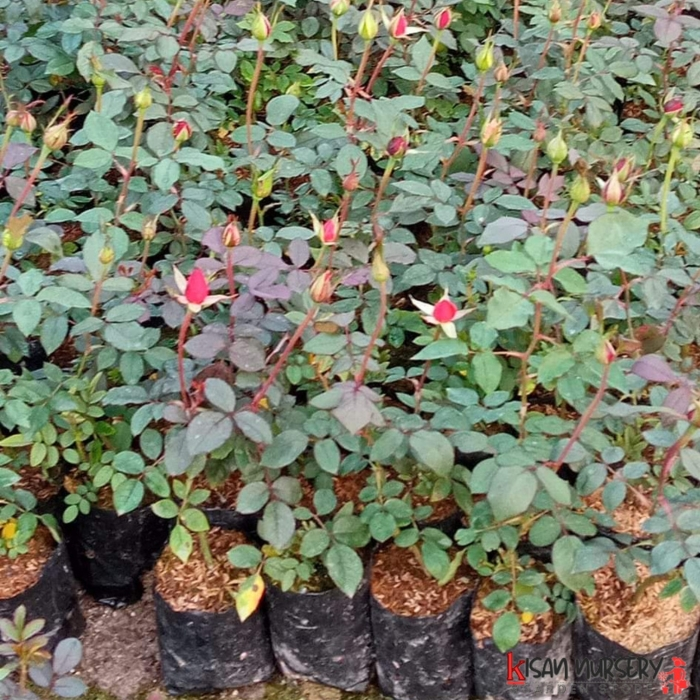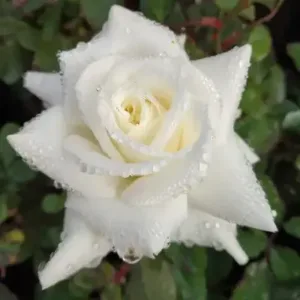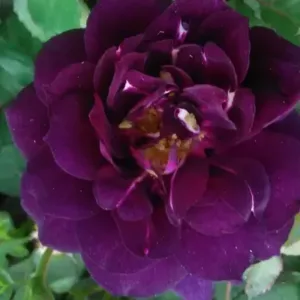What is in the box 
- Rose plant in nursery Pot or in grow bag
- plant hight 30-45 cm
- Pot or grow bag size : 5-6″ inch diameter
- Soil Media :rice husk + Coco Peat + Coco Chips
- Recyclable box
Note : Please make sure to check the actual product image before purchase. The image is for reference purpose only. As it is live plant , the actual product may vary in shape or appearance based on climate, age, height etc. (Will be send with flowers/without flowers based on climate). Above specification are indicative only, may vary by +-10% as it is live plants.
About product
Roses are perennial flowering plants belonging to the genus Rosa, which encompasses a wide variety of species and cultivars. They are renowned for their exquisite beauty, fragrant blooms, and diverse colors, including shades of red, pink, white, yellow, orange, and even bi-colors. Roses typically feature prickly stems known as thorns, pinnate leaves, and showy flowers with multiple layers of petals.
What Makes Roses Special:
- Symbolism: Roses have long been associated with love, romance, and beauty, making them popular choices for gifts, weddings, and other special occasions.
- Diversity: With thousands of cultivars available, roses offer an incredible diversity in terms of flower color, form, fragrance, and growth habit, allowing gardeners to find the perfect rose for their preferences and garden conditions.
- Fragrance: Many rose varieties emit a delightful fragrance, ranging from subtle to strong, enhancing the sensory experience of any garden or bouquet.
- Longevity: With proper care, roses can live for many years, becoming cherished fixtures in gardens and landscapes.
- Versatility: Roses can be grown as bushes, climbers, shrubs, or even ground covers, making them suitable for various garden styles and purposes.
Planting and Care:
- Location: Choose a sunny spot in your garden with well-drained soil for planting roses. Most rose varieties thrive in full sunlight.
- Soil Preparation: Before planting, amend the soil with organic matter such as compost to improve drainage and fertility.
- Planting: Dig a hole slightly larger than the root ball of the rose plant. Place the plant in the hole, ensuring that the graft union (if present) is above the soil level. Backfill with soil and water thoroughly.
- Watering: Keep the soil consistently moist, especially during the growing season. Water at the base of the plant to avoid wetting the foliage, which can lead to fungal diseases.
- Fertilizing: Feed roses with a balanced fertilizer formulated for roses in early spring, after the first flush of blooms, and in late summer or early fall.
- Pruning: Prune roses in late winter or early spring to remove dead, diseased, or crossing branches and to shape the plant. Pruning encourages new growth and promotes flowering.
Rose Care:
- Regular watering to keep the soil consistently moist, especially during dry periods.
- Mulching around the base of the plant to conserve moisture, suppress weeds, and regulate soil temperature.
- Monitoring for pests and diseases, such as aphids, powdery mildew, and black spot, and taking appropriate measures to control them.
- Providing adequate air circulation around the plants to prevent fungal diseases.
- Deadheading spent blooms to encourage continuous flowering and maintain plant appearance.
Special Features of Roses:
- Fragrance: Many rose varieties produce fragrant blooms that perfume the air with their delightful scent.
- Repeat Bloom: Some rose cultivars are repeat bloomers, meaning they produce multiple flushes of flowers throughout the growing season, providing continuous color and interest.
- Disease Resistance: Modern rose varieties often boast improved disease resistance, making them easier to grow and maintain.
- Variety of Forms: Roses come in various forms, including hybrid teas, floribundas, grandifloras, climbers, shrubs, and miniature roses, offering options for every garden style and space.
Rose Uses:
- Garden Ornament: Roses serve as stunning focal points in gardens, borders, and landscapes, adding beauty and elegance with their colorful blooms and lush foliage.
- Cut Flowers: Freshly cut roses are popular choices for floral arrangements, bouquets, and indoor decorations, brightening up homes and special events.
- Gifts: Roses are classic gifts for expressing love, admiration, gratitude, and various other sentiments on occasions such as birthdays, anniversaries, and Valentine’s Day.
- Medicinal and Culinary Purposes: Rose petals and hips have been used for centuries in traditional medicine and culinary applications, prized for their fragrance, flavor, and potential health benefits.
Whether you’re looking to enhance your garden’s beauty, express your emotions through floral gifts, or explore the culinary and medicinal properties of roses, these versatile plants offer something for everyone to enjoy and appreciate.
Here are some frequently asked questions about planting and caring for rose plants, along with their answers:
Q: When is the best time to plant roses?
A: The best time to plant roses is in early spring or fall when the weather is mild and the soil is workable. This allows the plants to establish their root systems before the onset of extreme temperatures.
Q: How do I prepare the soil for planting roses?
A: Prepare the soil by loosening it to a depth of about 12-18 inches (30-45 cm) and incorporating organic matter such as compost or well-rotted manure. This helps improve soil structure, drainage, and fertility, providing an ideal environment for rose roots to grow.
Q: How far apart should I plant roses?
A: Space roses according to their mature size and growth habit. Hybrid tea roses and floribundas typically require spacing of 18-24 inches (45-60 cm) between plants, while larger shrub roses may need 3-4 feet (90-120 cm) of space between them.
Q: How deep should I plant roses?
A: Plant roses at the same depth they were grown in the nursery pot. Dig a hole slightly wider and deeper than the root ball of the plant, and position the plant so that the graft union (if present) is just above the soil level. Backfill with soil and water thoroughly.
Q: How often should I water newly planted roses?
A: Newly planted roses need regular watering to help them establish their root systems. Water deeply immediately after planting, and then water regularly to keep the soil consistently moist but not waterlogged. Adjust watering frequency based on weather conditions and soil moisture levels.
Q: How do I fertilize roses?
A: Fertilize roses with a balanced fertilizer formulated for roses in early spring, after the first flush of blooms, and again in late summer or early fall. Follow the manufacturer’s recommendations for application rates and frequency. Avoid over-fertilizing, as this can lead to excessive vegetative growth at the expense of flowering.
Q: How do I prune roses?
A: Pruning is essential for maintaining the health, shape, and blooming performance of roses. Prune roses in late winter or early spring before new growth emerges. Remove dead, diseased, or crossing branches, as well as any weak or spindly growth. Shape the plant as desired, and encourage outward-facing bud growth to promote better airflow and prevent disease.
Q: How do I protect roses from pests and diseases?
A: Regular inspection is key to identifying and addressing pest and disease issues promptly. Use insecticidal soaps, horticultural oils, or botanical insecticides to control pests such as aphids, thrips, and spider mites. Manage diseases such as powdery mildew and black spot with fungicides labeled for use on roses. Good cultural practices, including proper spacing, sanitation, and adequate air circulation, can also help prevent problems.
Q: How do I winterize roses?
A: In cold climates, winter protection is essential for roses to survive and thrive. Before the first frost, mulch around the base of the plants with several inches of organic mulch to insulate the roots and protect them from freezing temperatures. In regions with harsh winters, consider wrapping the canes with burlap or applying a protective rose collar to prevent damage from freezing and thawing cycles. Remove any accumulated snow from the plants to prevent breakage, and prune lightly in late winter or early spring to remove any winter damage and prepare the plants for new growth.







